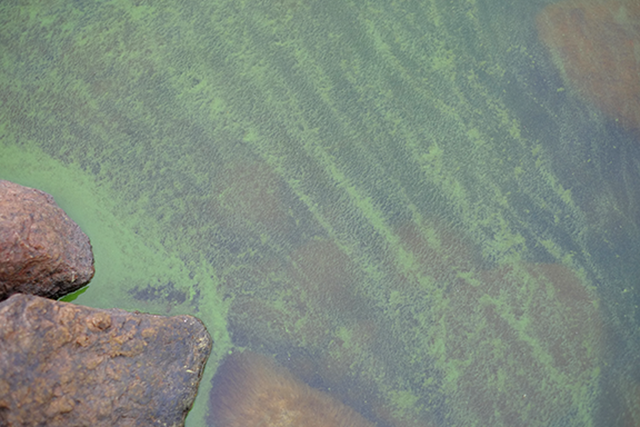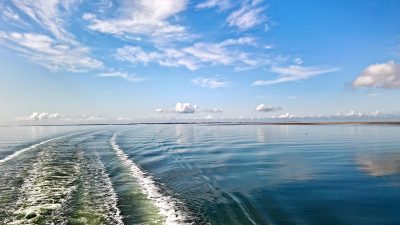Forgotten seas provide the solutions for environmental crises

Author
Kirsi Kurki-Miettinen
For Martin Koehring, head of the World Ocean Initiative and Senior Manager at Economist Impact, the sea has always been a passion. As a world citizen, he has had the opportunity to observe the sea from his native Germany, Belgium, Netherlands, and even Japan. Koehring wound up working in the field after he realized that the problems of the sea are not as visible as those we encounter on land, such as desertification and deforestation. Whether we are discussing pollution, nutrient discharges, microplastics or the economy, it seems that we have forgotten the sea.
A world citizen drifts to the sea
Not only does the Economist Group publish the well-known magazine The Economist, it is today also an international and innovative media and information service company. In the beginning of his career at the Economist Group, Koehring assessed the economic outlook of various countries; later, his tasks also featured themes related to health and sustainable food production.
Ten years ago, Koehring was among the organizers of the first World Ocean Summit. Every year, this international marine event brings together experts from various fields, leaders, organizations and politicians to discuss the status of the seas and their sustainable use.
The event is organized by the World Ocean Initiative. The goal of the Initiative is to revive the seas, and to build sustainable economies and livelihoods around them. The World Ocean Initiative draws our attention to the problems faced by the seas, such as pollution, discharges, and climate change, and, on the other hand, highlights sustainable solutions and ways of utilizing the sea. Related themes include wind power, green cargo transportation, sustainable fishing, and fish farming.
The wellbeing of the sea is linked to livelihoods
Eutrophication is the most severe problem faced by the Baltic Sea, but what is the greatest threat to the seas of the world? Koehring mentions pollution, harmful substances, nature loss, and the subsequent deterioration of livelihoods. For example, 37% of all fish live by the ever-diminishing coral reefs, although the area the reefs cover is only 0.1% of the seabed. It goes without saying that corals are highly important to tourism and consequently to the economy of the area.
Koehring reminds us that the seas also present opportunities for curbing climate change. Marine eelgrass is a proven, efficient carbon sequester in the Baltic Sea, and mangrove forests that grow by the seas around the world are up to fifty times more efficient carbon sinks than the rainforests. Habitats are, however, vulnerable: up to 7% of seagrass meadows disappear annually, and in the last 50 years, we have lost as much as half of the mangrove forests of the world. Studies indicate that if we do not tackle nature loss, mangrove forests will disappear in the next 100 years. The problems of the sea are less visible, and the related solutions undervalued, but as such, they are even more important.

“There are also many underused commercial opportunities in the sea. Seaweed, for example, could be grown and used in many ways in e.g. bioenergy, medicine, and the food and cosmetics industries, but the development of new innovations takes time and money”, says Koehring.
Saving the seas together – investors are also needed
The seas also need investors who can finance their sustainable use. According to Koehring, to be able to save the seas we need first and foremost high-quality information, cost/benefit analyses, and political steering and support for corporate responsibility. Companies that are the first ones to implement solutions that are less harmful to the environment may benefit from this in many ways. Companies can avoid sanctions and consumer boycotts, and adjust better to a changing world.
We also need cooperation between companies, the society, and organizations. One example of such cooperation is the Ocean Changemakers Challenge, which identifies and finances new innovation and start-ups that work to benefit the seas. Another example of crucially important cooperation can be found on the Seychelles, where blue bonds, i.e. investments objects that support the sea, have been built together with stakeholders of the finance industry, the government, and non-governmental organizations. Income from these bonds is used to compensate loss of income from discontinued harmful operations to the local population. In this way, the seas can be restored in a way that is profitable also for the locals, increasing the acceptance of protective measures.
As the markets for sustainable bonds grow, investors will view the sea as a profitable investment. Koehring also notes that we should not forget employment, recreational use, or cultural heritages. They are all very significant on the local level, and can act as motivators to save the sea.

“The seas hold many solutions to our crises, be they climate change, pollution, or nature loss. Solutions that are based on the sea can account for up to a fifth of the green house gas reductions required to stay under the 1.5 degrees warming goal”, says Koehring.


